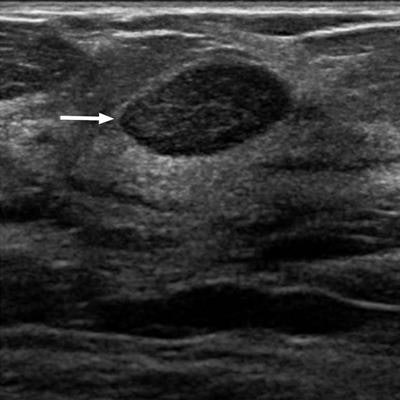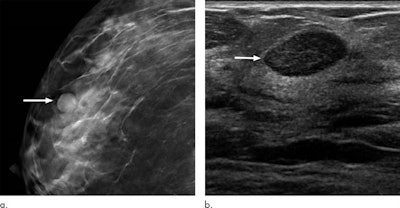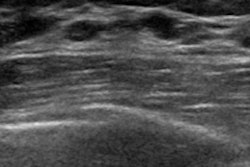
A six-month surveillance imaging appointment appears effective for women with BI-RADS 3 findings following routine screening mammography, according to the results of a large, long-term study published on May 19 in Radiology.
The study, which included more than 40,000 patients, found fewer than 2% of women with a lesion categorized as probably benign were eventually diagnosed with cancer. In addition, more than half of malignancies were diagnosed by the six-month mark.
The findings confirm the importance of a six-month interval for screening of women with BI-RADS 3 findings, according to lead study author Dr. Wendie Berg, PhD, a breast cancer researcher and radiology professor at the University of Pittsburgh School of Medicine and affiliated women's hospital.
"The important thing about this paper is that these data come from a wide number of facilities across the United States, so it really brings to bear that, yes, this is the appropriate practice and yes, you still need to see these patients in six months," stated Berg in a press release.
For their study, Berg and colleagues reviewed data from 43,628 women with a BI-RADS 3 finding following screening mammography. The study population hailed from 471 National Mammography Database reporting facilities in 31 states. They also all waited at least 90 days for follow-up imaging and had no prior history of breast cancer.
| Follow-up results for women with BI-RADS 3 finding after screening mammography | ||||
| 90 days | 6 months | 12 months | 24 months | |
| Number of women | 922 | 31,465 | 18,748 | 7,352 |
| Confirmed cancer cases | 1.3% | 1.5% | 1.2% | 0.6% |
| Downgraded to BI-RADS 1 or 2 | 18.3% | 45.7% | 63.5% | 83.2% |
| Underwent biopsy | 8.4% | 9.5% | 6.5% | 3.5% |
 (a) Craniocaudal tomosynthesis image shows a circumscribed mass at baseline screening mammography in a 40-year-old woman due to a biopsy-confirmed fibroadenoma. (b) Targeted transverse ultrasound image shows a circumscribed hypoechoic mass, a BI-RADS 3 finding. Image courtesy of Radiological Society of North America.
(a) Craniocaudal tomosynthesis image shows a circumscribed mass at baseline screening mammography in a 40-year-old woman due to a biopsy-confirmed fibroadenoma. (b) Targeted transverse ultrasound image shows a circumscribed hypoechoic mass, a BI-RADS 3 finding. Image courtesy of Radiological Society of North America.Overall, 11% of the study population underwent biopsy at some point in time. A total of 1.86% of all women were diagnosed with cancer, a percentage on par with the recommendation for a probably benign finding.
Out of the 810 cancers detected, one-third were ductal carcinoma in situs and about another third were invasive cancers. More than half of the cancers (57.8%) were diagnosed at or before the six-month follow-up appointment, and only 27 cancer cases had spread to the lymph nodes.
"The majority of cancers were diagnosed at or right after the six-month follow-up, so it actually is important to get these patients back in that six-month time frame," Berg stated.
It is important to note only 6% of women completed surveillance at the recommended six-, 12-, and 24-month intervals. Perhaps one reason why is that many women were downgraded to BI-RADS 1 or 2 findings during follow-up screening. In fact, after the 24-month follow-up visit, only 3,409 women, or 7.8% of the original study population, remained in surveillance.
Furthermore, the study only included women with a follow-up appointment to begin with, which eliminated almost half of all patients with a BI-RADS 3 findings in the National Mammography Database. Dr. Berg also cautioned that women with a personal history of breast cancer can have malignancy rates as high as 15% for BI-RADS 3 findings, and therefore, may have different follow-up imaging and biopsy requirements than those in this study.
"That suggests that we should probably be much more cautious about BI-RADS 3 findings in those patients," she stated.


















